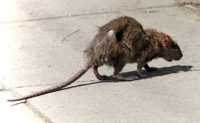05 Jun What Do We Find Disgusting? and Why?
MedicalResearch.com Interview with:
 Mícheál de Barra, PhD
Mícheál de Barra, PhD
Lecturer in Psychology
Brunel University London
MedicalResearch.com: What is the background for this study? What are the main findings?
Response: Disgust has been called the “intuitive microbiologist” – it tracks the sources of infection in our environment. But so far, there has been little attempt to link the sources of disgust to the sources of infectious disease in a comprehensive way. So we developed a method for developing stimuli based on a random sample illness.
We basically asked ourselves what the kinds of cues that might be associated with that kind of disease risk and asked people to rate disgust responses. The main motive for this was to contribute to a debate in the literature about if there are “kinds of disgust” and if so, how many. I results were a little ambiguous there I’m afraid.
MedicalResearch.com: What should readers take away from your report?
Response: Well, a lot of the key findings are already in the literature really. Women tend to rate things a little more disgusting than men, and older people lower than younger people. The paper is mainly for researchers interested in understanding what you need to measure to get a good idea of how different people vary.
MedicalResearch.com: What recommendations do you have for future research as a result of this study?
Response: We have argued that disgust is working to keep people healthy. It’s a behavioural arm of the immune system. I think that is a promising approach to understanding the emotion, but some basic unanswered questions.
First of all, no one has demonstrated that people higher in disgust sensitivity are less likely to contract infection.
A second important question is understanding the role of culture in shaping disgust. There is clearly both overlap and some differences in what people find disgusting, so it would be fascinating to understand the learning processes that give rise to these differences.
Citation:
Curtis V, de Barra M. The structure and function of pathogen disgust.Philosophical Transactions of the Royal Society: Biological Sciences, 2018 DOI: http://dx.doi.org/10.1098/RSTB.2017.0208
The information on MedicalResearch.com is provided for educational purposes only, and is in no way intended to diagnose, cure, or treat any medical or other condition. Always seek the advice of your physician or other qualified health and ask your doctor any questions you may have regarding a medical condition. In addition to all other limitations and disclaimers in this agreement, service provider and its third party providers disclaim any liability or loss in connection with the content provided on this website.
Last Updated on June 5, 2018 by Marie Benz MD FAAD
